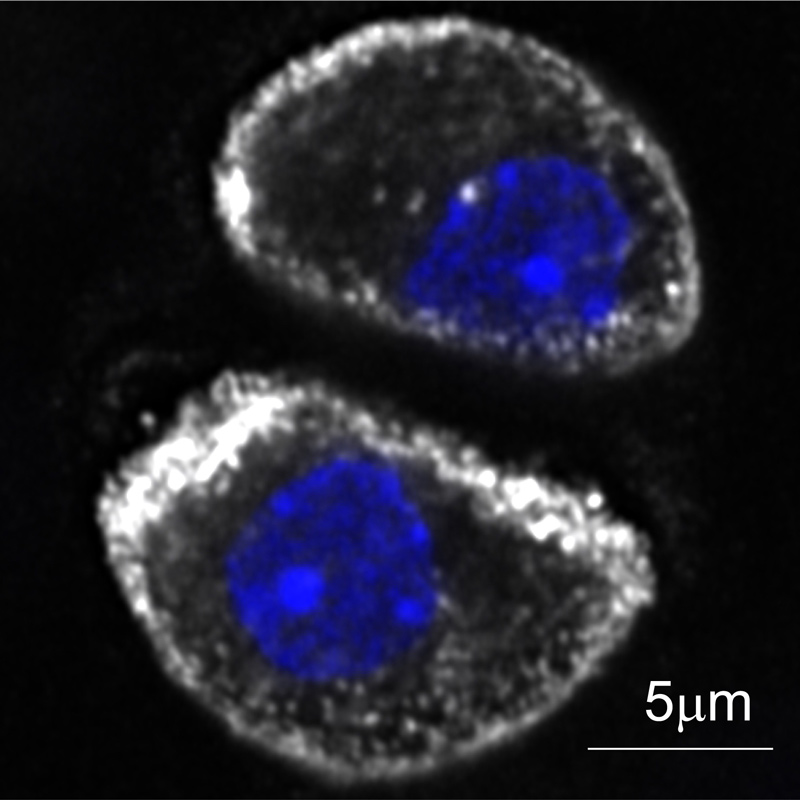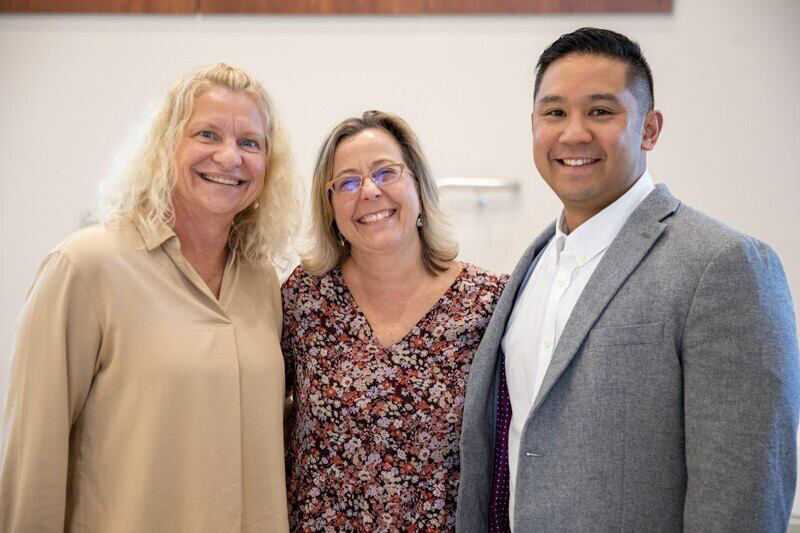


Key to preventing osteoarthritis
Photos by Lane McLaughlin and Ashley Barnas and courtesy of Justin Parreno August 04, 2023
UD Professor Justin Parreno’s research identifies protein that protects healthy joints
A previously unstudied protein in the framework of osteoarthritis may be critical in the prevention of the disease, according to groundbreaking new research published in the journal Science Advances, which included work by Justin Parreno, an assistant professor at the University of Delaware.

Osteoarthritis is an irreversible, painful and debilitating condition of the joints characterized by breakdown of the cartilage that cushions the ends of the bones, called articular cartilage. It occurs most often in the hands, knees or hips and is the most common type of arthritis, affecting more than 32.5 million Americans, according to the Centers for Disease Control and Prevention.
Parreno was a doctoral student at the University of Toronto when he found that the protein called adseverin helps keep the articular cartilage healthy. This is the first time a specific protein associated with cell structure has been identified to be protective against osteoarthritis.
The discovery came almost by accident. He and his colleagues were working on another cartilage therapy when Parreno found that healthy cartilage cells contain large amounts of adseverin while unhealthy cartilage cells do not. The amount of adseverin ultimately regulates the structural scaffolding of cells, called filamentous(F) actin.
F-actin acts like a shield against the stresses on cartilage cells that happen when the joints move. Losing F-actin causes the cells to eventually die.
“The cells are really round, and you have F-actin around the cells,” said Parreno, a member of UD’s Department of Biological Sciences. “If you lose F-actin, those cells are sensitive because there is mechanical stress on them, and they will probably undergo death. Dead cells aren’t able to produce the molecules that are required to regenerate cartilage, and eventually the cartilage degrades.”
Not only do the cells die, but the remaining cells start to produce molecules that cause additional problems in the cartilage.
“The cells that remain are also producing hypertrophic molecules resulting in mineralization and tissue stiffness which leads to a really bad joint,” Parreno said.
Current treatments for osteoarthritis either involve surgery or are aimed at controlling the pain. While Parreno notes the research has not been tested in humans, he said the findings may open doors to therapeutics targeting the protein.
“If we’re able to maintain the levels of adseverin, or alternatively somehow figure out how to keep that F-actin at a high enough level, perhaps we can prevent cell death,” he said. “We’ve got to keep these cells alive and healthy.”

Parreno’s lab at UD continues to investigate the regulation of F-actin in its relationship to osteoarthritis processes, including cell death, through the Delaware Center for Musculoskeletal Research (DCMR). The lab is focused on another F-actin-binding protein, called tropomyosin. Parreno said F-actin may hold the key to regulating cartilage degeneration.
“What I really find groundbreaking about this work is not necessarily adseverin, but that F-actin is reduced in osteoarthritis and leads to all of these changes,” Parreno said. “We know all of these changes are happening and if we can find out what’s the critical node in regulating all of these things, then we may be able to develop an osteoarthritis therapy. I think targeting F-actin might be that and we have just uncovered the tip of the iceberg.
“Adseverin regulates F-actin, but so do other molecules, so that’s why we need to understand if it is the main molecule, or if it is just one of them. Once we figure out which molecules are important perhaps we can chemically target them to prevent joint degradation.”
It may also be the key to other problems in other musculoskeletal tissues. The Parreno lab’s cartilage work is supported by a National Institutes of Health-funded DCMR project grant. However, Parreno is also part of an interdisciplinary team investigating multi-scale tendon damage and abnormal cellular responses in tendinopathy. As part of this effort, Parreno is investigating the role that F-actin plays in regulating tendinosis. The team is led by primary investigator Dawn Elliott, Blue and Gold Distinguished Professor of Biomedical Engineering within the College of Engineering and DCMR director, and includes co-investigator Karin Grävare Silbernagel, professor of physical therapy in the College of Health Sciences. The group received a nearly $2.3 million, five-year R01 Grant from the National Institutes of Health last fall.
For Parreno the research into osteoarthritis is somewhat personal. An athlete who played hockey growing up and plays basketball and lifts weights at the Carpenter Sports Building (Little Bob) now, he has run into injuries. “I’ve always been into the musculoskeletal system just because of sports. I think I was predisposed to orthopedic research because of that. So it’s partially serving myself. I know I’m going to get osteoarthritis,” he said with a smile.

Contact Us
Have a UDaily story idea?
Contact us at ocm@udel.edu
Members of the press
Contact us at 302-831-NEWS or visit the Media Relations website

